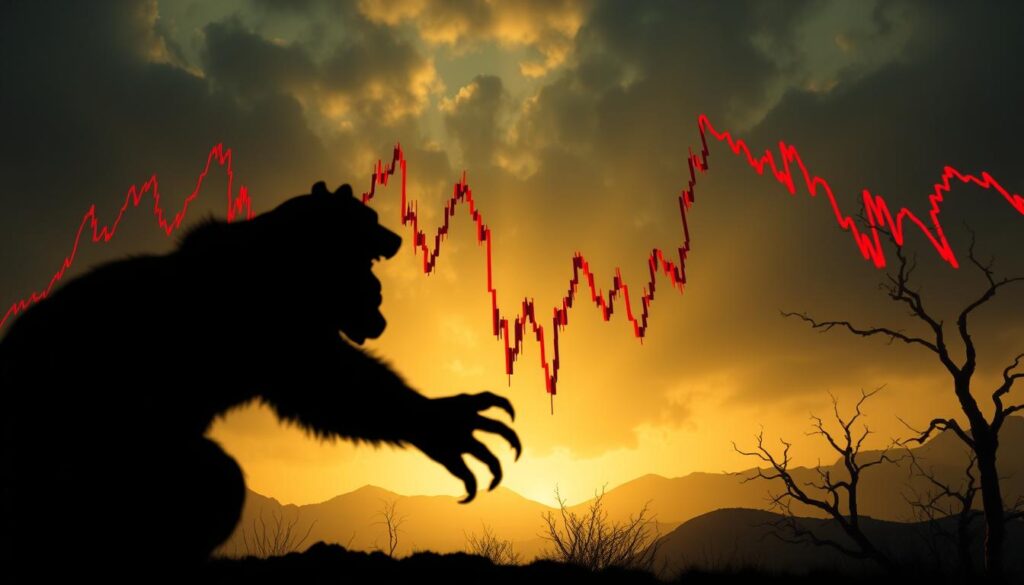Now Reading: Liquidation analysis crypto long short: A Comprehensive Guide
- 01
Liquidation analysis crypto long short: A Comprehensive Guide
Liquidation analysis crypto long short: A Comprehensive Guide

Navigating the digital asset space requires understanding critical market forces. This guide explores how forced position closures impact price movements across various trading platforms.
When traders use leverage, their positions face automatic closure if prices move against them. These events create significant pressure points throughout the financial landscape. Recent market activity demonstrates the massive scale of these occurrences.
Over $100 million in forced position closures have happened within single 24-hour periods. This highlights the importance of understanding these dynamics for anyone participating in leveraged digital asset activities.
Our comprehensive resource examines both bullish and bearish position scenarios. We provide balanced perspectives on how different market conditions affect various trade types. You’ll learn what signals to watch when evaluating potential forced closure events.
Whether you’re new to this space or an experienced participant, this article offers actionable insights. The information comes from real market data involving major digital currencies like Bitcoin and Ethereum.
Introduction to Liquidation in Cryptocurrency
Forced position closures represent one of the most significant risk factors in leveraged digital asset trading. These automatic terminations occur when participants cannot maintain adequate collateral for their borrowed positions.
What is Liquidation and Why It Matters?
When margin balances drop below required levels, exchanges automatically close positions. This protective measure prevents losses from exceeding available collateral.
Understanding these events matters because they create chain reactions. Multiple forced closures can amplify price movements across the entire digital asset landscape.
The Role of Forced Liquidations in Market Volatility
Forced position terminations contribute significantly to price swings. Concentrated selling or buying pressure emerges when many positions close simultaneously.
This creates a self-reinforcing cycle where initial liquidations trigger further price movements. The resulting volatility affects all market participants, regardless of their trading strategies.
Key Concepts: Leverage, Volatility, and Market Dynamics
Effective trading strategies depend on a solid comprehension of the core principles that drive market behavior. These interconnected concepts form the foundation for understanding how positions can be affected by various conditions.
Understanding Leverage in Cryptocurrency Trading
Leverage allows traders to control larger positions than their actual capital. This amplification works both ways, increasing potential gains and losses simultaneously.
Higher leverage ratios create greater exposure to price movements. Even small fluctuations can trigger margin calls when using significant leverage.
Market Volatility and Its Impact on Liquidations
Digital assets experience substantial price swings regularly. This volatility significantly influences the likelihood of forced position closures.
When combined with leverage, market turbulence creates dangerous conditions. Understanding these risk management principles becomes essential for survival in turbulent markets.
The interaction between these factors defines modern trading dynamics. Successful participants recognize how leverage, volatility, and market conditions work together.
Liquidation Analysis Crypto Long Short Explained in Detail
Understanding the dynamics between bullish and bearish position closures provides critical insights into market momentum shifts. These events occur when traders’ margin levels fall below required thresholds.

Bullish positions face termination during price declines. This typically happens when market sentiment turns negative unexpectedly. The resulting selling pressure can accelerate downward movements.
Bearish positions encounter closure during price rallies. Upward market movements trigger these events, often during strong bullish phases. This creates additional buying pressure that fuels further gains.
The asymmetry between these events shapes market behavior significantly. One side’s misfortune becomes the other side’s opportunity in perpetual futures markets.
| Position Type | Trigger Condition | Market Impact | Common Scenarios |
|---|---|---|---|
| Bullish Positions | Price declines below margin requirements | Adds selling pressure to markets | Bearish trends, negative news events |
| Bearish Positions | Price rises above margin thresholds | Creates buying pressure in markets | Bullish rallies, short squeeze situations |
| Mixed Positions | Volatile price movements both ways | Neutralizes overall market pressure | Sideways markets, high volatility periods |
Examining termination data reveals prevailing market sentiment. The ratio between different position types indicates which side faces more pressure. This information helps traders anticipate potential price movements.
Successful market participants monitor these metrics closely. They use this knowledge to manage risk and identify trading opportunities effectively.
How to Analyze Liquidation Events and Manage Risk
Effective participation in leveraged markets demands careful monitoring of specific indicators that forecast potential margin calls. Traders who master these metrics can better protect their capital and identify opportunities.

Interpreting Key Liquidation Metrics
Open Interest (OI) serves as a critical gauge for market conditions. This metric tracks outstanding derivative contracts that remain unsettled. Rising OI often signals growing market participation and leverage concentration.
For example, when Solana’s Open Interest surged recently, it highlighted potential liquidation risk if prices dropped below $150. Understanding these patterns helps traders anticipate pressure points.
Effective risk management involves calculating exact price levels where positions would face automatic closure. This calculation considers entry price, leverage ratio, and margin balance. Monitoring proximity to these thresholds is essential for survival.
Traders should implement dynamic strategies that adjust position sizes based on current volatility. Using lower leverage during turbulent periods reduces exposure to cascade events. Maintaining adequate margin buffers absorbs normal market fluctuations.
Professional management approaches include scenario planning and diversification across different assets. Real-time monitoring allows traders to anticipate potential volatility before it occurs. This proactive stance helps avoid being caught in forced position waves.
Examining Price Movements and Market Sentiment in Liquidation Events
Market dynamics during forced position closures reveal powerful interactions between trader psychology and price action. These events create distinctive patterns that differ from normal trading activity.
Understanding these patterns helps participants anticipate potential volatility spikes. The relationship between sentiment and price becomes particularly clear during these periods.

Assessing Funding Rates and Their Implications
Funding rates in perpetual futures markets act as a real-time sentiment gauge. These periodic payments balance contract prices with spot market values.
Positive rates indicate bulls pay bears, suggesting optimistic market sentiment. Negative rates show bears compensating bulls, reflecting pessimistic expectations.
Extreme rate values signal potential vulnerability. Persistently high positive funding rates may indicate overextended bullish positions.
The Influence of Market Sentiment on Price Movements
Trader psychology significantly impacts how prices behave during closure events. When many participants hold similar positions, sudden price shifts can trigger cascading effects.
These price movements often accelerate existing trends. The Cardano case demonstrated how extreme sentiment imbalances create explosive movements.
A thorough market sentiment analysis helps identify these opportunities. Recognizing when crowd psychology becomes too one-sided provides valuable insights.
| Funding Rate Scenario | Market Sentiment Indication | Potential Price Movement | Risk Level |
|---|---|---|---|
| Strongly Positive | Bullish Overextension | Sharp Downward Correction | High |
| Moderately Positive | Healthy Bullishness | Gradual Upward Trend | Medium |
| Near Zero | Balanced Sentiment | Sideways Movement | Low |
| Moderately Negative | Cautious Bearishness | Controlled Decline | Medium |
| Strongly Negative | Bearish Excess | Rapid Upward Reversal | High |
Monitoring these metrics helps traders navigate volatile conditions. Combining funding rate data with other indicators creates a comprehensive view.
This approach allows for better anticipation of potential price shifts. Effective monitoring turns market data into actionable intelligence.
Utilizing Data Tools: Liquidation Heatmaps and Position Mapping
Advanced data visualization techniques provide traders with critical insights into market positioning and potential pressure points. These tools transform complex information into actionable intelligence about vulnerability zones.

Heatmaps use color intensity to show concentration areas at different price thresholds. Brighter colors indicate heavier positioning around specific levels.
Reading and Interpreting Liquidation Heatmaps
Understanding heatmap visualization requires recognizing key patterns. Horizontal bands represent clusters of positions at risk.
The current price line shows proximity to these critical areas. This spatial arrangement helps identify potential turning points.
Identifying Liquidation Clusters for Trading Strategy
Concentrated zones create significant risk when prices approach them. These clusters can trigger chain reactions across multiple exchanges.
Platform-specific data from sources like Hyperliquid offers granular insights. This information helps traders anticipate volatility and manage exposure.
| Heatmap Scenario | Color Intensity | Market Implication | Trading Response |
|---|---|---|---|
| Heavy Concentration | Bright Yellow-Orange | High Risk of Cascade Events | Avoid Entry Near Cluster |
| Moderate Clustering | Medium Orange | Potential Support/Resistance | Watch for Reversal Signals |
| Light Distribution | Pale Yellow | Lower Volatility Risk | Normal Position Sizing |
| Clearing Pattern | Fading Colors | Risk Reduction | Consider Position Entry |
Effective use of these tools enhances decision-making around critical price levels. Traders can identify optimal entry and exit points based on cluster positioning.
Differentiating Long and Short Liquidations in Crypto
Bullish and bearish trade terminations operate under opposing market conditions, creating distinct pressure points throughout financial ecosystems. Recognizing these differences helps traders anticipate potential volatility and manage exposure effectively.
Recent data highlights significant patterns in market behavior. Bitcoin saw $41.19 million in terminated trades with bearish bets comprising 60.99% of the total. Ethereum experienced $49.23 million in closures where pessimistic positions represented 61.77%.
Risks Associated with Long Positions
Optimistic market bets face specific challenges during price declines. These situations add selling pressure that can accelerate downward trends. The concentration of similar termination thresholds creates cascading effects.
Understanding these dynamics is crucial for effective investment planning. Proper risk management helps avoid being caught in unfavorable market movements.
Understanding Short Position Liquidations
Bearish trades encounter unique challenges during price rallies. The requirement to buy back assets adds upward momentum to already rising markets. This creates short squeeze scenarios that can propel prices dramatically.
Recent altcoin data showed 72.64% of terminated trades were pessimistic positions. This indicates widespread miscalculations about market direction among bearish traders.
Strategic Insights: Managing Leverage and Capital in Trading
The foundation of sustainable trading lies in disciplined capital allocation and leverage control. Successful market participants understand that proper money management determines long-term survival.
Professional traders adjust their approach based on current conditions. They recognize that leverage should serve their strategy rather than dictate it.
Establishing Effective Stop-Loss Strategies
Stop-loss orders provide essential protection for leveraged positions. These tools help traders maintain control over their exposure.
The best stop-loss placement balances two important factors. It must avoid normal market fluctuations while limiting potential losses.
Advanced techniques include trailing stops and volatility-adjusted exits. These methods help lock in profits during favorable movements.
| Stop-Loss Type | Best Use Case | Risk Level | Implementation Difficulty |
|---|---|---|---|
| Fixed Percentage | Beginner Traders | Medium | Low |
| Volatility-Based | Experienced Participants | Low | Medium |
| Trailing Stop | Trend Following | Low | High |
| Time-Based | Event Trading | Medium | Medium |
Capital preservation remains the top priority for smart traders. They typically risk only 1-5% of their account per trade.
This approach ensures that even multiple losses won’t destroy their trading capital. It also prevents emotional decision-making during difficult periods.
Finding the right balance between opportunity and risk requires discipline. Sometimes, the best trade is the one you avoid taking.
Conclusion
Effective risk management in derivative markets requires more than just tracking price movements—it demands insight into trader positioning. The framework presented throughout this guide helps participants navigate complex conditions.
Understanding the distinction between spot and perpetual futures markets is essential. Spot trading reflects direct supply and demand for the underlying asset. Perpetual futures introduce leverage that concentrates risk around specific price levels.
The digital asset landscape continues evolving with sophisticated tools and complex dynamics. Traders must adapt their strategies to changing conditions across different exchanges.
Mastering these concepts turns potential volatility into strategic advantage. The knowledge shared here provides a solid foundation for success in today’s competitive trading environment.













